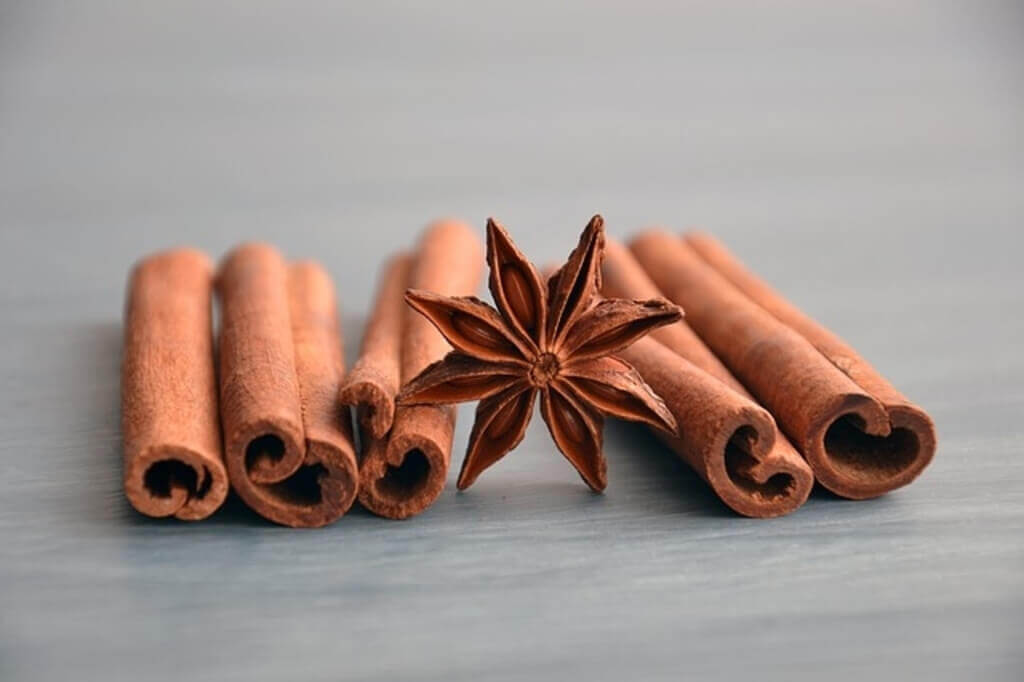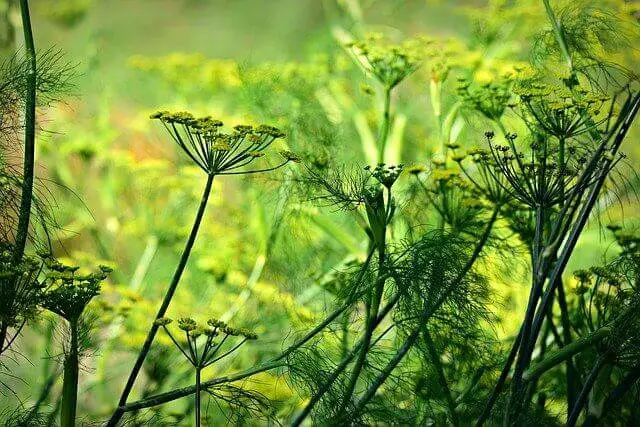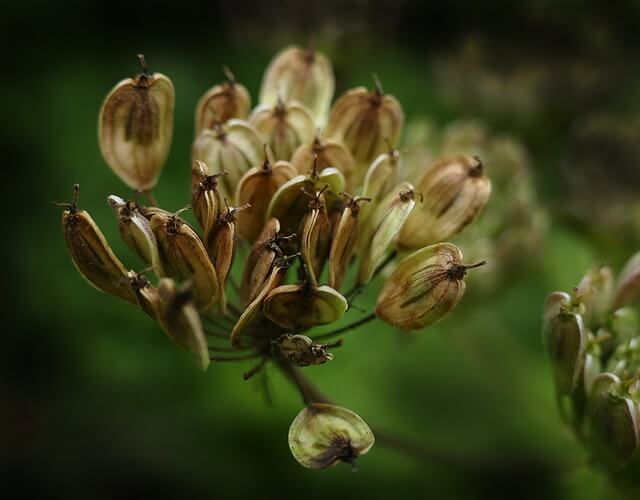80 Fun Facts About Anise (with Photos, ID & Info)
Anise is a plant that is most often used as a spice. Anise seeds are used in many baking recipes, and it can also be brewed into an alcoholic drink called Pernod.
It’s been around for thousands of years, but only recently has science started to understand the health benefits of this herb. In this article, we will explore 80 Fun Facts About Anise with Photos, ID & Info.
Table of Contents
Anise Overview
- Kingdom: Plantae
- Clade: Tracheophytes
- Clade: Angiosperms
- Clade: Eudicots
- Clade: Asterids
- Order: Apiales
- Family: Apiaceae
- Genus: Pimpinella
- Species: P. anisum
- Binomial Name: Pimpinella anisum (Carl Linnaeus)
- Scientific Name: Pimpinella anisum
- Native Area: Eastern Mediterranean regions, and Southwest Asia.
- Plant Type: Herbaceous annual plant.
- Flower Type/Color: Tiny white or yellow flowers. (Depending on the variety)
- Propagation: Seed, cuttings, and division.
- Plant Height: 35.4″ inches (1.5-3.0 feet).
- Plant Spacing: 12-18″ inches. (1.0-1.5 feet).
- Hardiness Zones: 4 through 8.
- Blooming Period: Late summer, early fall.
- Harvest Period: est. 120 days (after sowing) or August to September.
- Sun Exposure: 6-8 hours of Full or Partial Sun.
- Soil Type: Light, well-drained soil.
- Soil pH: 6.0-7.0.
Plant Description
The anise plant is an annual herb in the parsley family that produces small, oval-shaped seeds with a sweet licorice flavor. The anise plant can grow up to 3 feet tall and has clusters of tiny white or yellow flowers (depending on the variety).
The leaves are lanceolate or ovate shaped and can range from 3/8 to 2 inches long depending on the size of the stem. Anise plants thrive best in dry soil and hot climates. The flowers of the anise plant can range from white, to pale yellow to even light purple.
How to Grow Anise
Anise can be planted directly into deep pots, containers or sown outdoors directly into the ground, usually in spring after danger of frost has passed.
From seed: Choose an area in your garden that is protected from wind. Direct sow seeds ¼ inch deep and 12 inches (30 cm) apart, in a light, well-drained soil. Anise seeds will germinate at a soil temperature of 70 degrees F, or 21 degrees C, in approximately 15-20 days. Once the plants sprout, water themtwice a week until they are about 8 inches in height (20.3 cm.), and then gradually reduce it to once a week.
Important Tip: The Anise plant does not transplant well.
Fun Facts About Anise
- Anise is a plant that is part of the parsley family.
- Anise is native to the eastern Mediterranean, but now it can be found all over the world.
- In North America, it grows primarily in California, Hawaii and Florida.
- The oil of anise (the smell that you smell when you taste something like black licorice), comes from the seed of the plant.
- For this reason, it’s often referred to as “aniseed.”
- Another name for them is “pimpinella”.
- In the United States, the seeds are used to flavor cakes, cookies, and candy.
- Anise is a natural breath freshener.
- The Ancient Romans chewed on anise seeds to help keep bad breath away.
- In many places in Europe, anise was thought to be a good luck charm.
- In England during the Middle Ages, people wore necklaces with anise seeds because they thought it would ward off evil spirits.
- Anise is also good for digestion.
- The Ancient Romans used it as a remedy for upset stomachs and fevers.
- Anise is good for treating digestive tract problems.
- It was also used in Armenian folk medicine, where it is known as “essogh”.
- Anise was also used to help promote lactation during nursing.
- Anise was even said to be able to treat stomach aches, indigestion and headaches that are caused by drunkenness or food poisoning.
- During the Middle Ages, mists of anise were employed in mixtures of perfumes and incense.
- In Medieval Europe, people believed aniseed would prevent poisoning by killing any harmful spirits it came into contact with.
- Black licorice flavored candy is often thought of as one of Halloween’s most popular treats.
- Aniseed was even used to flavor drinks called madeira and sherry.
- Anise is also good for helping with coughs.
- The Romans used it to help cure whooping cough, mumps, asthma and bronchitis.
- Today, anise is still used in some countries as a cough suppressant (particularly in Mexico).
- Legend has it that anise was one of the three gifts to the Three Wise Men.
- Its seeds were used as a type of currency in Ancient Greece and Rome.
- The plant’s name derives from Arabic “aniz”, which refers to its aroma.
Anise seeds are small measuring about 3.5 mm, and brownish-yellow; they also look kind of like caraway seeds (though they don’t taste anything like them).
- In France, this spice is called “anis”.
- Anise is also known as pimpinella anisum, fennel seed, Chinese star anise, and sweet cumin.
- Anise was first cultivated in Syria and Palestine (modern-day Israel).
- The seeds are often used as a replacement for peppermint during colds due to their similar properties.
- The Anise plant has been used medicinally for thousands of years.
- Anise is a annual herb that grows to 2 to 3 ft (0.6-0.9 m) in height.
- The plant can grow in a number of habitats, including grasslands and shrublands, as well as forests and deserts.
- There are two species of anise commonly grown in the USA, one is yellow anise, and the other is Florida anise. Both varieties are poisonous when consumed, but can be used as a room air freshener.
- “Anise” is also used to describe other plants in the anise family, such as fennel and star anise.
- The anise plant has a light green stem and feathery leaves that can reach up to 4 inches long.
- It produces small yellowish-white flowers, which develop into tiny fruits that become the spice.
- The seed of the plant is dried and ground into a powder or used whole to add flavor to cakes, biscuits, alcoholic drinks, and other foodstuffs.
- Anise seeds can be stored in a cool place for up to one year.
- The seeds are an important ingredient in Middle Eastern cuisine. They are used in soups, sauces, stews, and sweets.
- The fragrance of anise is reminiscent of cloves, but has a slight bitterness with hints of chocolate and licorice.
- Anise is most commonly found in foods served during the winter months, when it is not in season.
- Anise is often eaten whole or ground into a powder or paste for cooking.
- Anise is an annual flowering plant in the family Apiaceae. Anise plants are slender, highly aromatic annuals that are grown for their seeds. The flavor of anise is often used in baking, various alcoholic beverages, and to season foods such as potatoes or lamb.
- Anise is native to the eastern Mediterranean region, where it has been cultivated since ancient times.
- The species name “Illicium verum” comes from “illici”, the Latin word for anise (the genus was once classified under this name).
- Anise cannot grow well in a soil with a high pH. Anise grows best in hot and dry climates, similar to that of the Mediterranean region. This may help explain its natural range.
- In Western Asia, Anise was grown as early as the 1500s BC by the Hittites, who called it “sigoon” (“satium” in Latin). In Egypt, anise has been found growing wild along the Nile River and appears to have been cultivated widely from as early as 2000 BC.
- Anise plants grow best in full sun and well-drained soil with a pH between 6 and 7.
- The flowers of the plant appear in umbels (or compound umbels). These umbels are made up of small, yellowish-white or pinkish flowers.
- The seeds can be used whole or ground into a powder. Anise contains the bioactive compound flavonoid anethole, making it useful for medicinal purposes such as reducing pain and preventing infection. It may also be used to treat some respiratory problems like asthma and bronchitis. Ground seeds are sometimes mixed with water to make an anisette-flavored drink called “anisette”.
- Anise can be used to flavor foods such as bread, cakes, cookies, candy, desserts, custards and puddings.
- The leaves are sometimes added to tea.
- Its flavor has also led to its use in several brands of liquor. It is also used in some herbal teas. Anise oil (made by steam distillation of the seeds) is widely used in perfumes for its characteristic scent and flavor. French Impressionist painter Claude Monet created over 60 mosaic-like still life paintings of bottles and jars containing Anise from his kitchen garden at his home “Giverny”.
Related Article: Common Herbs and Spices used in Mexican Cuisine









